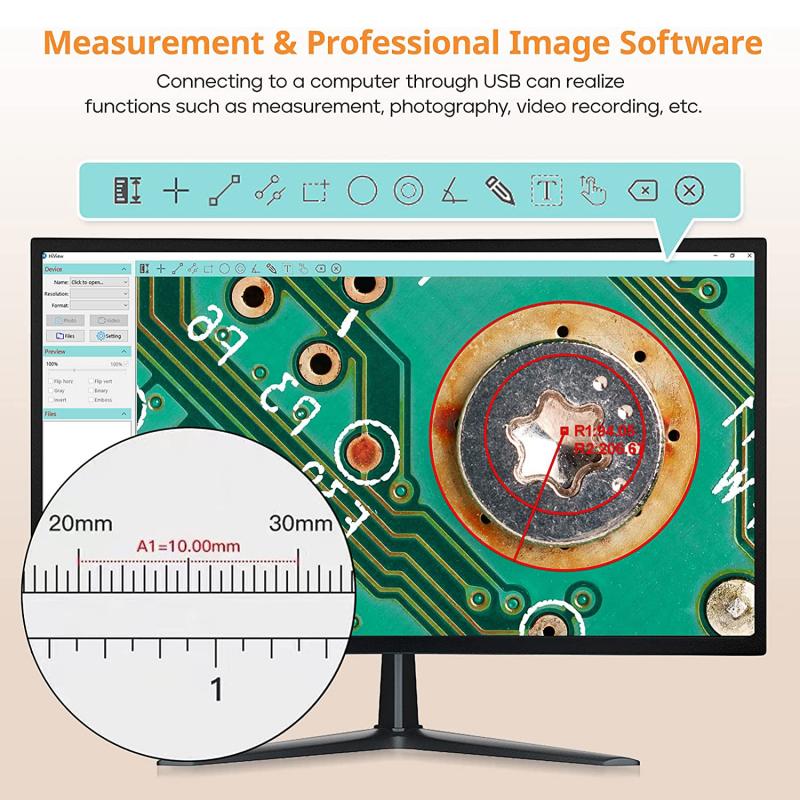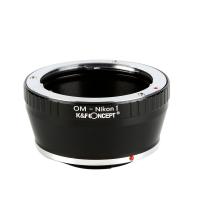What Type Of Microscope Has The Greatest Magnification ?
The electron microscope has the greatest magnification among all types of microscopes. It uses a beam of electrons instead of light to magnify the specimen, allowing for much higher magnification and resolution. The maximum magnification of an electron microscope can reach up to 10 million times, which is much higher than the maximum magnification of a light microscope, which is around 2000 times. Electron microscopes are widely used in various fields of science, such as biology, chemistry, and materials science, to study the structure and properties of materials at the atomic and molecular level. There are two main types of electron microscopes: transmission electron microscope (TEM) and scanning electron microscope (SEM), each with its own advantages and applications.
1、 Electron Microscope

The electron microscope is the type of microscope that has the greatest magnification. It uses a beam of electrons instead of light to magnify the specimen, allowing for much higher magnification and resolution than traditional light microscopes. The electron microscope can magnify objects up to 10 million times, revealing details that are not visible with other types of microscopes.
There are two types of electron microscopes: transmission electron microscopes (TEM) and scanning electron microscopes (SEM). TEMs use a thin sample that is placed on a grid and then bombarded with electrons. The electrons pass through the sample, creating an image on a screen. SEMs, on the other hand, use a beam of electrons to scan the surface of a sample, creating a 3D image.
The latest advancements in electron microscopy have allowed for even higher magnification and resolution. Cryo-electron microscopy (cryo-EM) is a technique that allows for the imaging of biological molecules at near-atomic resolution. This technique involves freezing the sample in a thin layer of ice and then imaging it with an electron microscope. Cryo-EM has revolutionized the field of structural biology, allowing researchers to study the structure of proteins and other biological molecules in unprecedented detail.
In conclusion, the electron microscope is the type of microscope that has the greatest magnification. With the latest advancements in electron microscopy, researchers can now study biological molecules at near-atomic resolution, opening up new avenues for scientific discovery.
2、 Scanning Electron Microscope

The Scanning Electron Microscope (SEM) is a type of microscope that has the greatest magnification among all the other types of microscopes. It is capable of producing images with magnifications up to 500,000 times, which is much higher than the magnification produced by other types of microscopes such as the compound microscope or the transmission electron microscope.
The SEM works by scanning a beam of electrons across the surface of a sample, which then produces a high-resolution image of the sample's surface. The electrons interact with the atoms in the sample, producing signals that are detected by the microscope and used to create an image.
The SEM has revolutionized the field of microscopy, allowing scientists to study the structure and properties of materials at the nanoscale level. It has been used in a wide range of applications, from materials science and engineering to biology and medicine.
In recent years, there have been significant advancements in SEM technology, including the development of new detectors and imaging techniques. These advancements have further improved the resolution and sensitivity of the SEM, making it an even more powerful tool for scientific research.
Overall, the Scanning Electron Microscope remains the most powerful microscope available today, and its continued development and refinement will undoubtedly lead to new discoveries and breakthroughs in a wide range of fields.
3、 Transmission Electron Microscope

The transmission electron microscope (TEM) is a type of microscope that has the greatest magnification among all the types of microscopes. It uses a beam of electrons to create an image of the specimen, which is then projected onto a screen or captured by a camera. The magnification of a TEM can reach up to 10 million times, allowing scientists to see structures that are too small to be seen with other types of microscopes.
The TEM has revolutionized the field of biology and has allowed scientists to study the structure and function of cells and tissues at the molecular level. It has been used to study viruses, bacteria, and other microorganisms, as well as to investigate the structure of proteins, DNA, and other biomolecules.
In recent years, there have been advancements in TEM technology that have further increased its capabilities. For example, cryo-electron microscopy (cryo-EM) has allowed scientists to study biological samples in their natural state, without the need for staining or fixation. This has led to new insights into the structure and function of proteins and other biomolecules.
Overall, the TEM remains an essential tool for biological research and continues to push the boundaries of what we can see and understand about the microscopic world.
4、 Scanning Tunneling Microscope

The Scanning Tunneling Microscope (STM) is a type of microscope that has the greatest magnification. It was invented in 1981 by Gerd Binnig and Heinrich Rohrer at IBM's Zurich Research Laboratory. The STM is a powerful tool that allows scientists to see individual atoms and molecules on surfaces with unprecedented resolution.
The STM works by scanning a sharp metal tip over a surface and measuring the flow of electrons between the tip and the surface. By controlling the distance between the tip and the surface, the STM can create a three-dimensional image of the surface with atomic resolution. The STM has been used to study a wide range of materials, including metals, semiconductors, and biological molecules.
In recent years, there have been advances in microscopy technology that have pushed the limits of resolution even further. For example, the Cryo-Electron Microscope (Cryo-EM) has emerged as a powerful tool for studying the structure of biological molecules. Cryo-EM uses a beam of electrons to image frozen samples, allowing scientists to see the structure of proteins and other molecules at near-atomic resolution.
Despite these advances, the STM remains one of the most powerful tools for studying the atomic and molecular structure of materials. Its ability to see individual atoms and molecules has revolutionized our understanding of the nanoscale world and has opened up new avenues for research in materials science, chemistry, and physics.






































